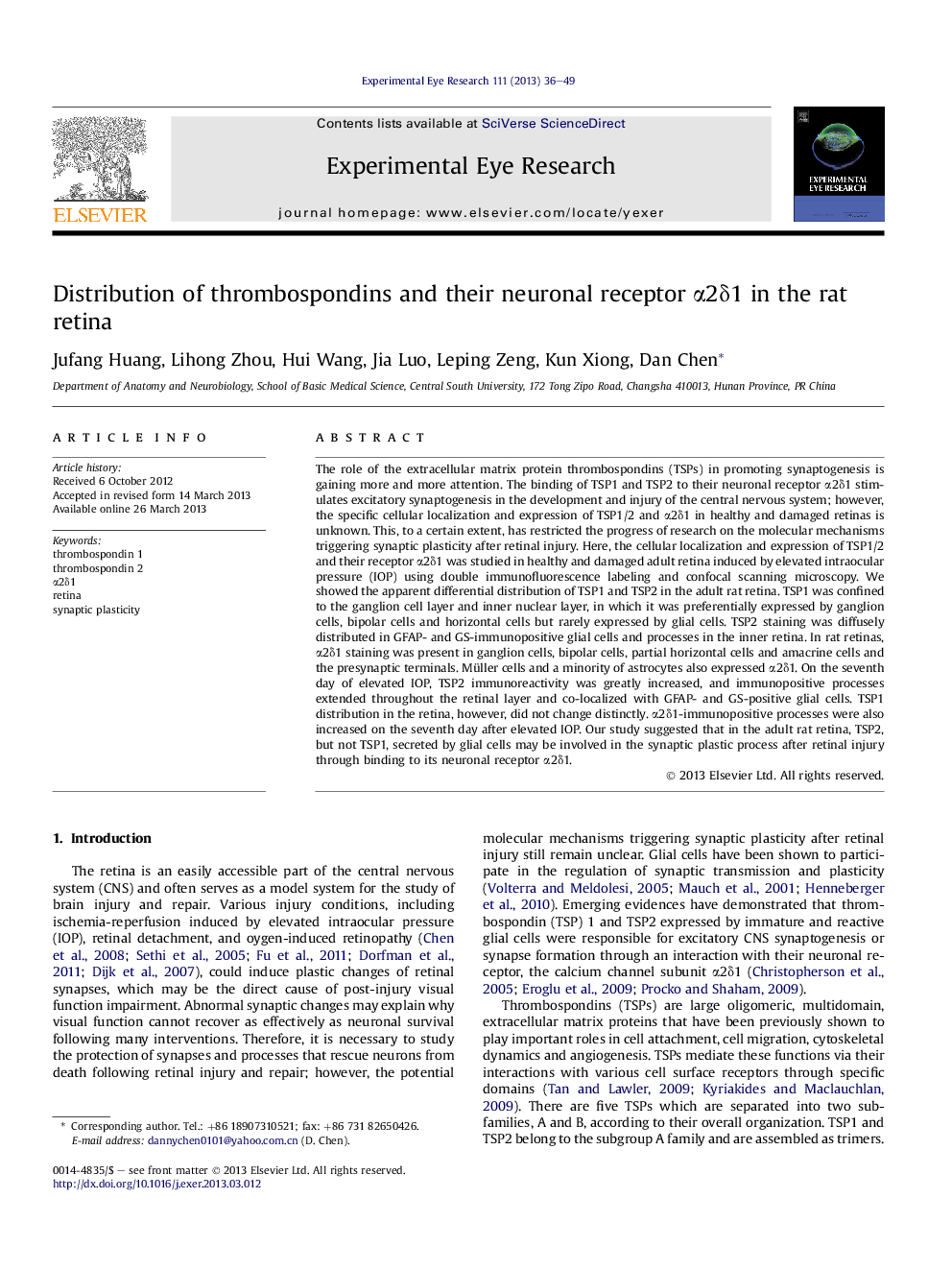| Article ID | Journal | Published Year | Pages | File Type |
|---|---|---|---|---|
| 6197295 | Experimental Eye Research | 2013 | 14 Pages |
â¢In healthy adult rat retina, TSP1 and TSP2 had an apparent differential distribution.â¢TSP1 was expressed by retinal neurons and TSP2 was expressed by retinal glial cells.â¢In rat retina, both retinal neurons and glial cells expressed α2δ1 receptor.â¢After elevated IOP, TSP2 and α2δ1 were greatly increased with the glial activation.â¢Glia/TSP2-α2δ1 pathway might be involved in synaptic plasticity after retina injury.
The role of the extracellular matrix protein thrombospondins (TSPs) in promoting synaptogenesis is gaining more and more attention. The binding of TSP1 and TSP2 to their neuronal receptor α2δ1 stimulates excitatory synaptogenesis in the development and injury of the central nervous system; however, the specific cellular localization and expression of TSP1/2 and α2δ1 in healthy and damaged retinas is unknown. This, to a certain extent, has restricted the progress of research on the molecular mechanisms triggering synaptic plasticity after retinal injury. Here, the cellular localization and expression of TSP1/2 and their receptor α2δ1 was studied in healthy and damaged adult retina induced by elevated intraocular pressure (IOP) using double immunofluorescence labeling and confocal scanning microscopy. We showed the apparent differential distribution of TSP1 and TSP2 in the adult rat retina. TSP1 was confined to the ganglion cell layer and inner nuclear layer, in which it was preferentially expressed by ganglion cells, bipolar cells and horizontal cells but rarely expressed by glial cells. TSP2 staining was diffusely distributed in GFAP- and GS-immunopositive glial cells and processes in the inner retina. In rat retinas, α2δ1 staining was present in ganglion cells, bipolar cells, partial horizontal cells and amacrine cells and the presynaptic terminals. Müller cells and a minority of astrocytes also expressed α2δ1. On the seventh day of elevated IOP, TSP2 immunoreactivity was greatly increased, and immunopositive processes extended throughout the retinal layer and co-localized with GFAP- and GS-positive glial cells. TSP1 distribution in the retina, however, did not change distinctly. α2δ1-immunopositive processes were also increased on the seventh day after elevated IOP. Our study suggested that in the adult rat retina, TSP2, but not TSP1, secreted by glial cells may be involved in the synaptic plastic process after retinal injury through binding to its neuronal receptor α2δ1.
